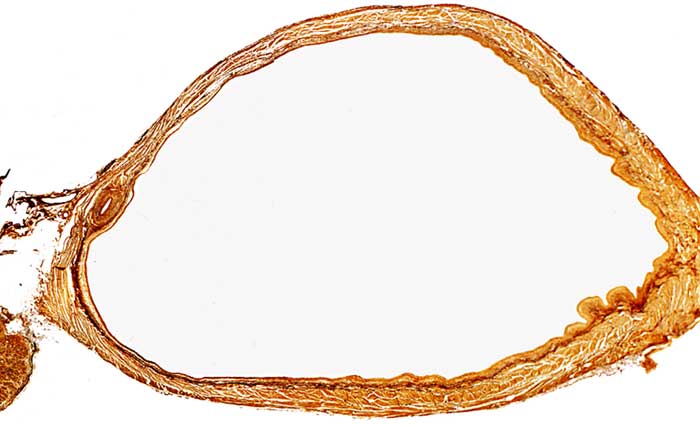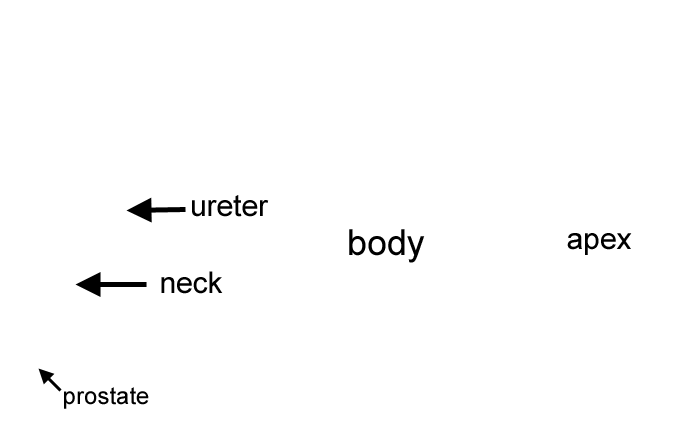Close
Cystometrogram Illustrates Compliance

Above: A cystometrogram (plot of intravesical pressure vs volume during filling) shows the high compliance of a normal urinary bladder. The bladder undergoes large volume increases with only minor elevations in intravesical pressure over a wide range of filling. Bladder compliance is a consequence of wall tension interacting with viscoelastic properties of the bladder wall. Tension, initially taken up by elastic elements, is transferred to viscous elements which elongate and thereby moderate the tension. The wall is reshaped as tension stretches lumen epithelium and wall connective tissue; the latter rearranges muscle fascicles and elongates individual myocytes. Eventually, viscoelastic accommodation and thus bladder compliance approaches a limit. Thereafter wall tension and intravesical pressure rapidly rise with additional filling.
Below: Sagittal section through a distended urinary bladder of a dog. The bladder apex (right) is less distended than the bladder body and neck which exhibit a thinner wall asscociated with rearranged muscle fascicles and stretched myocytes. (A ureter profile is evident to the left.)


[spacebar toggles labels — esc closes window]
